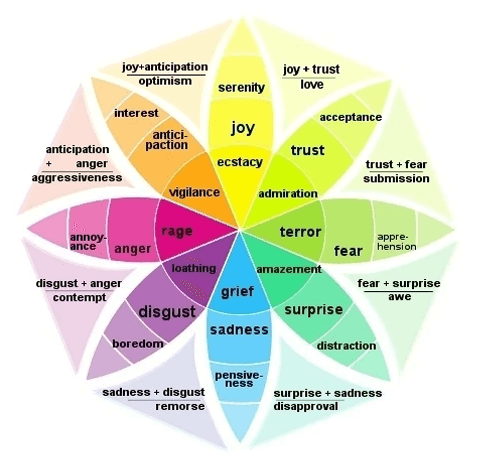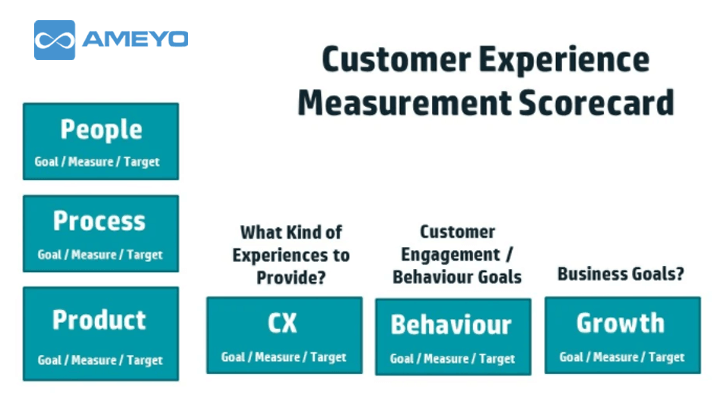When’s the last time you recall a smooth, streamlined, and pleasant experience while working with a brand? Or when you just had to share that one time a brand exceeded your expectations and delivered a level of customer experience that was simply amazing? Now, look at this experience through the eyes of the company. Are you ensuring customers get this level of experience every single time?
Customer Experience Measurement
According to Forrester, 72% of businesses say that customer experience management is their top priority. This shows that although many companies acknowledge the importance of customer experience to improve loyalty and advocacy, maintaining high standards in the competitive market is a lot harder than it seems.
Not only this, many don’t know how to measure the results of their CX efforts. This is because there isn’t a clear-cut questionnaire you can just email to all your customers asking them how satisfied they were at each touch-point along their customer journey. It’s just not that simple. Even if it were, have you ever wondered what you would ask, or how you would measure their ‘happiness’?
What is Customer Experience Measurement?
Customer Experience Measurement is the practice of measuring customer experience at all touchpoints along the customer journey. It includes all customer actions.
Before we start with the nits and grits of measuring CX, it is important to understand the importance of measuring customer experience.
Importance of Measuring Customer Experience (CX)
The most difficult task for any company is to make the organization more customer-centric, and measuring customer experience allows them to understand the needs of their customers and build an organization that is focused solely on the customer.
Measuring customer experience is not just an additional benefit, it is a necessity in today’s age. It provides organizations with the necessary means to collect and analyze information to get a better perspective of the customer and their needs.
Measuring customer experience also allows organizations to find out what satisfies and dissatisfies their customers, and how to use that information to improve customer experience. Using this information, companies can better cater to their customer’s expectations and continuously improve service quality.
Not just understanding the customer, measuring customer experience also allows companies to measure how well their customer experience strategy is performing in terms of meeting business KPIs.
How to Start Measuring Customer Experience (CX)
Many organizations believe that measuring customer satisfaction is a good measure of customer experience. But, that isn’t quite the case anymore. Let’s get into the details of how to measure customer experience along the entire customer journey:
-
Know Thy Customer
Most companies perform some kind of customer research to gather insights about their target audience. This information can be used in email marketing, SMS marketing, and other forms of targeted promotions. Understanding the customer allows businesses to think like them, and offer the right products & services to better engage them and provide superior experiences.
To start understanding your customers, it is crucial to know their most important needs and expectations in terms of what makes them satisfied and what it takes to retain them. Find out the key-value factors in the minds of your customers. Make a map by creating a timeline of their journey and outlining what is important at each touchpoint along the journey.
-
Identify All Touch-points
Analyze the customer journey from start to finish, and map the entire customer experience according to the customer’s point-of-view. Pick the touchpoints that are moments of truth for the customer – ones that will etch your brand’s experience into their memory forever. Develop touch-point metrics for each touch-point, or metrics that specifically measure the performance of each touch-point.
Think of each touchpoint as an opportunity to improve customer experience. No touch point will ever be perfect – this is a continuous improvement process. It is your job to identify which area to focus on first along the customer journey. You can also use a customer experience mapping tool to map your customer journeys.
-
Work Upon Key Problem Areas
Once all the touchpoints have been identified, identify the key problem areas and start working on them systematically. Identify and single out each problem, and devise innovative CX solutions to address these specific problems.
-
Choose the Right CX Metrics and Measure Them
Now that you’ve taken the time to know your customer, identified all the touchpoints that matter, and worked on key problem areas – it’s time to start measuring the results of your efforts by choosing the right business metrics to analyze.
Your primary objective should be to check whether the solutions you have proposed to your addressed problems are working or not, and how they can be improved further. If a solution isn’t working, think of something else that might do the trick.
Use an appropriate data collection methodology to collect data about the various metrics defined above and find a way to collect insights on a regular basis. Set targets for each CX metric and continuously keep improving your organization’s CX quality.
If you’re using a customer experience tool with an inbuilt score for satisfaction or loyalty, use this as a starting point to help point you in the right direction. Track multiple metrics over multiple timeframes to guarantee success for your business.
Don’t want to risk customer experience while working remotely? Get a WFH ready solution now.
Here are some customer experience metrics you can focus on:
- Net Promoter Score: NPS is an index that ranges from -100 to 100 that shows how willing a customer is in recommending a brand’s products/services to other people. NPS divides customers into three categories – Promoters (loyal + satisfied), Passives (satisfied + unenthusiastic), and Detractors (unsatisfied + unenthusiastic). Generally, companies collect NPS data using surveys, and calculate the score by subtracting the percentage of detractors from the percentage of promoters.
- Average Handling Time (ART) / First Response Time (FRT): FRT shows how quickly agents are able to provide customer support to customer queries. AHT is the average amount of time taken to solve a customer’s query. Quick response and handling times are usually linked to high customer satisfaction levels – research has proved this to be true. According to Forrester, 45% of US consumers will abandon an online transaction if their questions or concerns are not addressed quickly. According to Mckinsey, 75% of online customers expect help within 5 minutes.
- First Contact Resolution (FCR): FCR gives a measure of how well agents can solve customer queries the first time using surveys or statistical evaluations. If customers aren’t able to get their queries resolved the very first time they contact you, they probably won’t be satisfied or loyal for long.
- Customer Satisfaction Score (CSAT): Customer satisfaction score is the average score given to your brand according to customer answers based on a survey. Companies use CSAT scores to find out how satisfied customers were with specific products/services.
- Customer Effort Score (CES): Customer Effort Score is the score given to companies that shows the amount of effort customers have to put to execute a particular task. It has specific ranges, from Strongly Disagree to Strongly Agree with strengths ranging from 1 to 5. Companies should strive to make it as easy as possible to complete a particular task to maintain high levels of loyalty and satisfaction. They’re giving you their time – the least you can do is make it easy for them to engage with you, right?
- Emotional Assessment using Plutchik’s Wheel of Emotions: Robert Plutchik created a wheel of emotions in 1980 which depicted all the primary and secondary emotions in different colors. Use this combined with sentiment analysis capabilities through AI / Big Data to integrate emotions into your customer experience measurement strategy.
Is there a Universal Metric for Customer Experience?
When choosing a universal metric for customer experience, what comes to mind? NPS (Net Promoter Score) Score, CSAT (Customer Satisfaction) score, or CES (Customer Effort Score)?
Truth is – every company has its own definition of the customer experience score because the industry they operate in varies from company to company. A B2C company might look at the scenario differently as compared to a B2B company. For a B2C company, CES might be given more importance, whereas in B2B, NPS might be preferred. It really depends on the company, and how their business works.
CX Measurement Cheat Sheet: How to Build a Customer Experience Measurement Scorecard
The best way to measure customer experience is to build a customer experience measurement scorecard, which helps identify the critical moments of truth for a customer and improve them strategically. Link KPIs and metrics with one another to form a measurement system along the entire customer journey. Identify lead and lag indicators for each section of the customer experience scorecard, and set goals for each metric.
Your CX Measurement Scorecard should include:
- Objectives: This is what you want to achieve – your end goal. e.g. improve customer retention
- Measure: This is how you will measure what you are trying to achieve in your objective. It is always something quantifiable, realistic, and in your control to influence. e.g. churn rate
- Targets: Targets define your objectives in quantifiable terms, i.e. in the form of numbers. e.g. churn rate < 10%
- Key Business KPIs: This is the business KPI that drives your objective. e.g. revenue or number of repeat customers.
Here is a sample customer experience measurement scorecard you can apply to your business:
This CX measurement framework should give you a clear idea about:
- Customer Satisfaction
- Visualizing the Entire Customer Journey
- Which Interactions Matter Most
- What Drives Your Customer Loyalty
- Where You Can Improve
Our customer experience scorecard should help you get started with Customer Experience management. Once you apply it across the entire customer journey, you’ll find it gets more detailed as you break down individual processes – each having its own objectives, measures, targets, and key business KPIs. Now, go out and try to achieve your CX goals by building your first customer experience measurement strategy!





